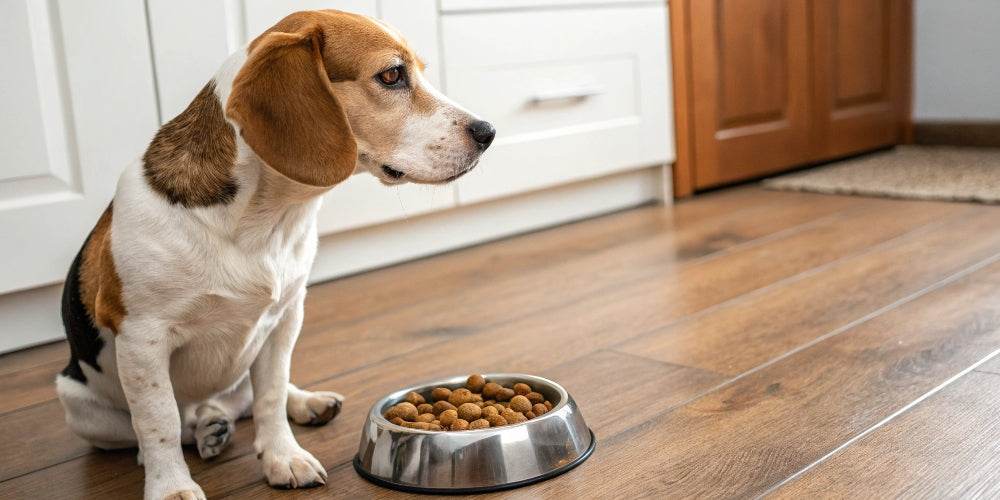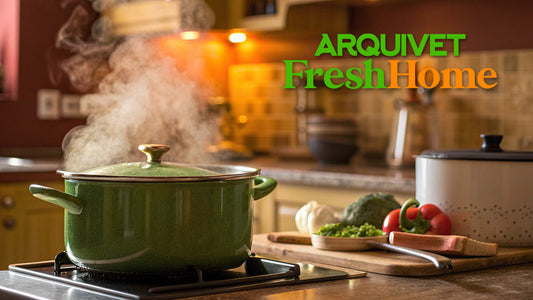
My dog doesn't want to eat food: tips and tricks to make it work
Just like people, dogs aren't always hungry, and that's why sometimes they won't eat their food. The problem arises when, no matter how hard we try, the animal still won't eat its food. It's possible that your little one isn't feeling well or is depressed, so if you've tried other foods and it still won't eat, we recommend you visit a veterinarian. However, in most cases, the reaction is related to a behavioral problem stemming from overindulging your pet and offering it "good food," which isn't part of its diet. Therefore, this is something you have to solve on your own—and avoid making the same mistakes again that would have made your dog refuse to eat.
If you're looking for tricks to get your dog to eat kibble or advice if your dog won't eat kibble, this article is for you. We can help. It also answers questions about why my dog won't eat kibble and other related questions. Read on for more information!
Why isn't my dog eating?
There are several reasons why the situation "my dog won't eat" or "my dog won't eat his food" may occur. Although in most cases it's due to a normal reaction to a desire for other types of food or because he doesn't like the food you're giving him, it's important to pay attention, especially if the behavior has occurred suddenly—as it could be due to an illness. These are some of the reasons why my dog won't eat:
- Lack of a stimulusThe dog has become accustomed to eating other foods and must be retrained to eat its own food again.
- He doesn't like his food: Not all dog food is the same. We can find a wide variety of brands and types of dog food, such as puppy food, adult dog food, or senior dog food—as well as food according to your pet's size. If after reading our tips, your dog still won't eat, we recommend that you try giving him a different type of dog food. We recommend that you opt for recipes with quality, natural foods and no chemicals, such as dog food from Arquivet.
- DiseaseThis could be a kidney problem, dental problems, depression, sadness, or anxiety, and obstructions in the digestive tract, among others. In this case, you should immediately consult your trusted veterinarian.
My dog won't eat his dog food. What can I do?
We've just answered the question of why my dog won't eat his kibble. Now let's look at several tricks to get my dog to eat kibble and what you can do to redirect your pet's behavior—as long as you're sure he's not sick, of course. Try the following techniques:
- Don't give him any other foodYour dog may have adopted the habit of not eating kibble because he's receiving other foods from other household members. To address his behavior, you'll need to starve your pet and not give him anything other than the kibble in his bowl. Of course, his water bowl should always be full.
- Be persistentIt may take your dog about two days to eat anything, but eventually, hunger will take over and he'll eat. You must be persistent so your dog learns that the only thing there is to eat is his kibble, otherwise you'll reinforce his negative behavior.
- Stimulates your sense of smellTo encourage him to eat, you can also scatter the food far from his bowl. This will encourage him to search for food using his nose. Studies show that having your dog use his nose becomes a more stimulating and satisfying experience, which ultimately encourages him to eat more quickly.
- Mix the feedAnother trick to get my dog to eat dry food is to mix his food with hot water. In this case, the steam will intensify the smell of the dry food and make your pet want to eat it. Plus, the softer the food, the easier it will be for your dog to eat. Of course, this isn't a technique you have to use every day, as dry food helps prevent tartar and other dental problems in your pet.
How should I give my dog food?
You should consider several things, such as the number of times you should feed your dog, as well as the recommended amount per serving. For puppies, consider that they eat several times a day, so you'll need to divide their rations into several servings throughout the day. Adult dogs can also eat several times a day or in a single serving. In the latter case, you can also leave the food on demand—with a dispenser and portion it out—so they can ration it themselves throughout the day. In any case, try to follow these steps:
- Set a mealtime for your dog and stick to it.
- Respect the quantities offered by the manufacturer according to your dog's weight in the product description.
- Provide water to accompany the feed.
- Do not mix the feed with other foods, as this will reinforce the behavior of not eating the feed.
How many days can a dog go without eating?
It's okay if your dog goes two days without eating, as we mentioned in this article about retraining dogs who don't want to eat. As a reference, keep in mind that Large dogs can go up to 14 days without eating. and small dogs a maximum of 7. Now, this isn't about going to extremes, as it can cause internal problems. If you notice that your dog isn't eating, no matter how hard you try, see a veterinarian immediately—perhaps he has some illness or condition you're ignoring.
Do dogs get tired of eating the same thing?
The answer is noDogs, like cats, eat to meet their nutritional and energy requirements. Therefore, you should choose an appropriate diet that meets their nutritional needs based on their age, activity, reproductive status, and health. Of course, make sure the food you choose is of high quality, palatable, and acceptable as a main food. At Arquivet, we recommend that you choose natural feed without chemicals and additives.


